In most cases, chronic forms of inflammatory diseases of the genitourinary sphere are the result of an unprofessional approach to therapy. The disease cannot be eliminated if the symptoms and treatment of cystitis in women do not coincide. The drugs that are imposed by television advertising bring only temporary relief, and after a certain time the disease returns again.
The only way to get rid of cystitis is to establish the cause of the disease and undergo a full course of treatment under the supervision of a professional urologist.
Material Content:
- 1 Cystitis - causes in women
- 2 The main symptoms and signs of the disease
- 3 Disease complications
- 4 Diagnostic measures
- 5 Medications for the full course of treatment of the disease
- 6 Treatment of a chronic form of the disease
- 7 Folk remedies for cystitis in women
- 8 Nutrition and microflora
- 9 Cystitis Prevention
Cystitis - causes in women
In medicine, the concept of "cystitis" combines several types of symptomatic urinary pathologies, in which there is a lesion of the bladder mucosa. Due to the anatomical features of the body, women suffer from cystitis several times more often than men.
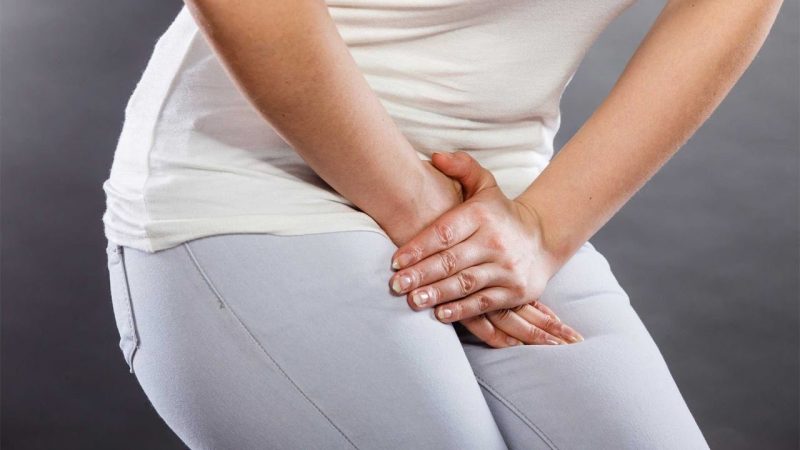
The work of the bladder is associated with all physiological systems, so functional abnormalities in the internal organs, one way or another, affect the health of the urogenital sphere of a woman.
The development of the inflammatory process may be preceded by:
- viral or bacterial infections - influenza, tonsillitis, sinusitis, staphylococcus, trichomonas, Escherichia coli, caries, furunculosis;
- hypothermia;
- allergic reaction;
- a change in the hormonal background during menstruation, pregnancy, menopause;
- acquired diseases - diabetes mellitus, colitis, spinal injuries, nephrological and endocrine pathologies, tumor formations;
- taking medications;
- decreased immunity;
- an abnormality in the development of the genitourinary system;
- insufficient genital hygiene;
- acute forms of cystitis most often occur against a background of congestion in the urinary system.
The pathways of pathogenic microorganisms into the bladder also differ. In diseases of ENT organs, the infection spreads through the body through the blood. In diseases of the gastrointestinal tract, microbes enter the genitourinary organs from the anus. Due to nephrological pathologies, pathogens move from the kidneys with urine.
Factors contributing to the development of cystitis include wearing tight synthetic underwear, a tendency to constipation, frequent changes in sexual partners, subject to unprotected sex, as well as conditions that reduce the potential of the immune system - stress, lack of sleep, excessive exercise, and irregular nutrition.
The main symptoms and signs of the disease
The development of cystitis can occur acutely or with gradually increasing symptoms. The characteristic signs of cystitis in acute form are pain and pain during urination.
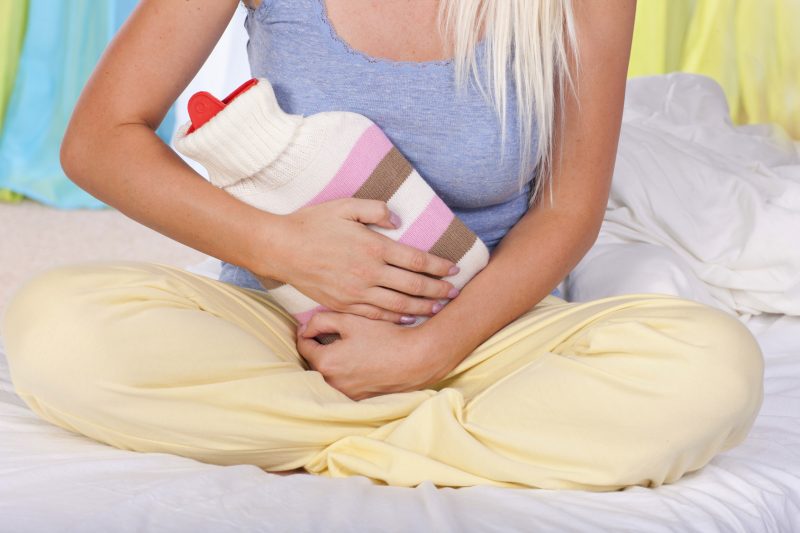
But as the disease develops, symptoms such as:
- discomfort in the genital area and pubic area;
- itching and burning in the perineum - the result of the irritating effects of toxic substances accumulated in the urine;
- frequent urination;
- pain in the lower abdomen and back, a feeling of fullness;
- headache;
- fatigue;
- a slight increase in body temperature;
- clouding of urine;
- pungent odor of urine;
- feeling of incomplete emptying of the bladder;
- the appearance of blood in the urine may indicate the development of complications.
Cystitis of an allergic or infectious nature in 95% of cases is accompanied by itching.
Disease complications
Due to its high prevalence (pathology is diagnosed in 40% of women in the world), the severity of the effects of cystitis is often underestimated.
With proper treatment, provided there are no reasons that support the course of the pathology, the symptoms of acute cystitis go away, and the woman's well-being improves markedly. If the necessary therapeutic effect is absent, the disease acquires a chronic form of the course, which is fraught with serious health complications.
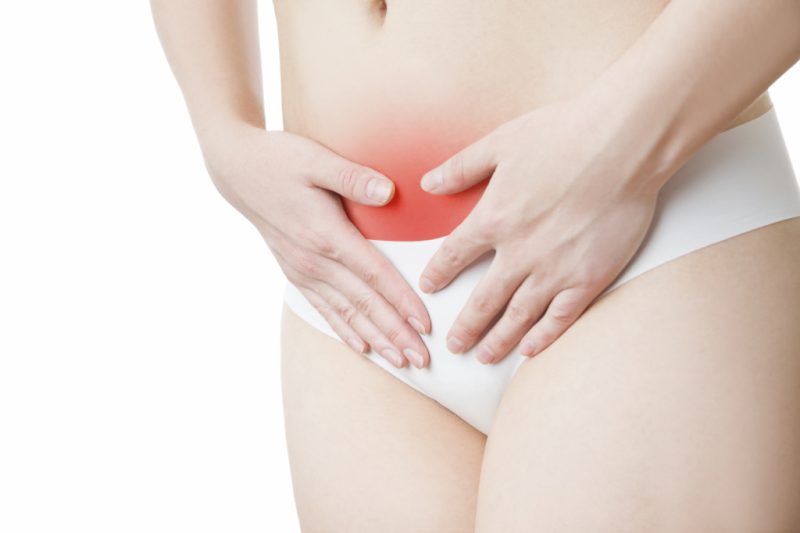
Chronic cystitis is characterized by damage to most of the bladder mucosa. In this case, swelling and thickening appear in the affected areas, against the background of a decrease in the elasticity of the epithelium.
The progress of the pathological process leads to complications that threaten the health of vital organs and systems:
- in 95% of cases, kidney diseases occur - pyelonephritis, renal failure;
- an organic change in the tissues of the bladder is fraught with a rupture of its walls and the development of peritonitis;
- frequent inflammation is one of the main causes of adhesions;
- decreased reproductive function, the danger of complete loss of fertility;
- urethritis;
- tumor processes;
- the formation of ulcers on the walls of the bladder, bleeding;
- urolithiasis disease;
- muscle damage and loss of tone of the bladder tissue, which leads to its dysfunction and urinary incontinence.
In the woman’s body during life there are periods when the predisposition to the development of cystitis is associated with natural physiological changes.
Periods of vulnerability to cystitis in a woman’s life
The first critical period begins before the age of three. At this age, children with congenital pathologies of the urinary tract may develop vesicoureteral reflux, in which urine returns from the bladder back to the kidneys.The consequence of the pathology is vulvovaginitis and ascending infection of the bladder.
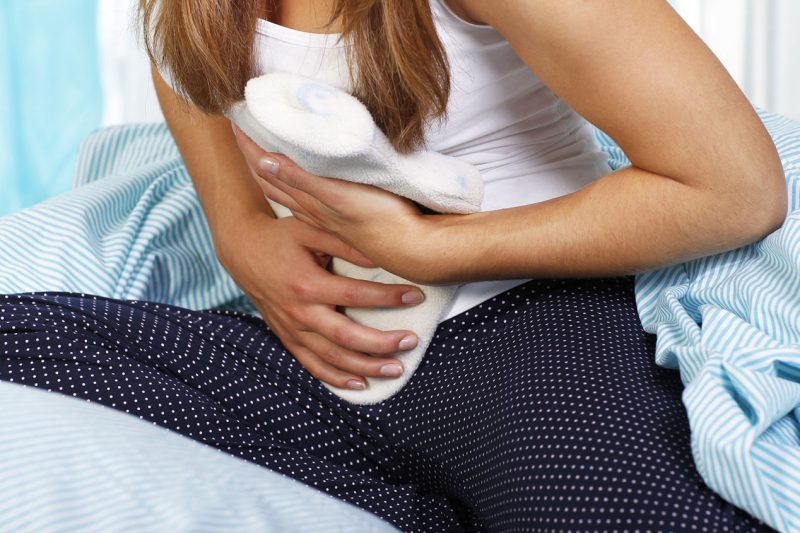
Puberty is the second, important in the degree of predisposition to cystitis period in a woman's life. The hormonal changes inherent in puberty are associated with the risk of infection by infection during unprotected sex.
Menopause is manifested not only in a decrease in the hormonal level in the female body, but also in a decrease in the protective properties of the bladder mucosa, as well as in a change in its anatomical position. All these changes contribute to the development of inflammation of the urinary tract and other pathologies inherent in cystitis.
Diagnostic measures
A medical examination of patients with suspected cystitis involves not only confirming the diagnosis, but also determining the underlying disease that provoked inflammation of the bladder mucosa.

Along with the study of anamnestic data and symptoms of the disease, urologists apply the following diagnostic measures:
- general urine analysis;
- general blood analysis;
- cystoscopy - an examination of the bladder through an endoscope;
- analysis of the composition of the vaginal microflora;
- Ultrasound of the genitourinary system;
- PCR - a molecular research method;
- bacterial urine culture.
In some cases, doctors use the information obtained by biopsy, a microscopic examination of samples of affected tissues, to make a diagnosis.
Medications for the full course of treatment of the disease
The treatment of cystitis is to eliminate not only inflammation of the bladder mucosa, but also the diseases that support them. The choice of therapeutic methods and means depends on the form of the disease and the accompanying pathological processes.
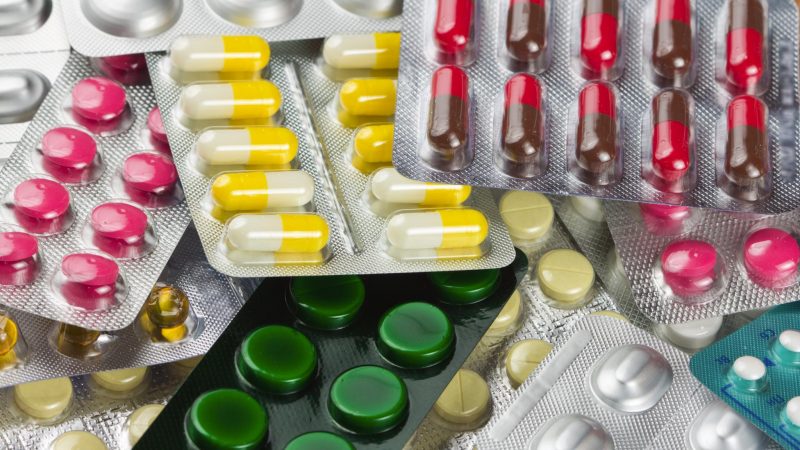
To stop the symptoms of the acute form of cystitis, the patient is prescribed bed rest, a special diet, heating pads, as well as antispasmodic, antibacterial and diuretic drugs.
The minimum course of treatment for acute cystitis is 7 days. Interrupted treatment is one of the main reasons for the development of a chronic form of cystitis.
Antibacterial drugs
The appointment of antibacterial drugs is appropriate for cystitis, the causative agent of which is bacteria.
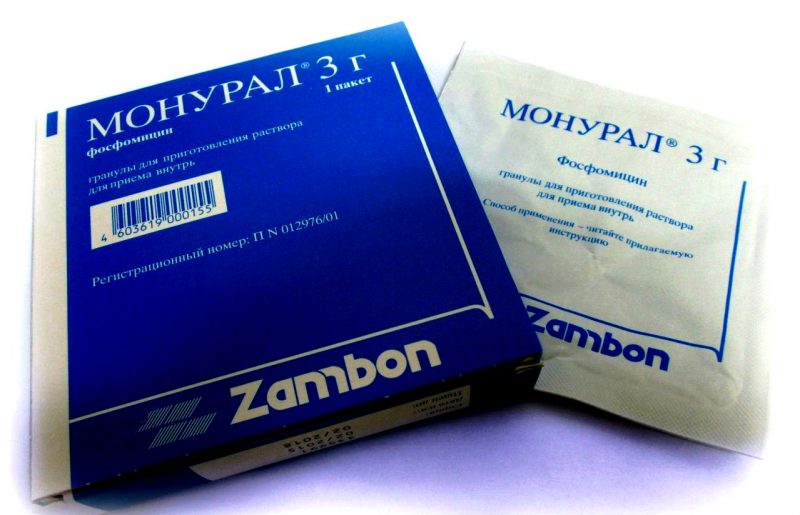
Among the most effective antibacterial agents:
- Monural - an antibiotic based on fosfomycin. Available in the form of granules. It is taken once in the acute form of cystitis;
- Palin - pills for cystitis and other acute or chronic infections of the urinary system. Belongs to the group of quinolones. The active substance is pipemidic acid;
- Furagin - A popular antibiotic based on nitrofuran. It is relevant when exposed to bacteria, the sensitivity of which in Furagin is proven by seeding;
- Nolicin (analogues of Norbactin, Normax) - antibiotic reserve drug. It is prescribed if the use of other drugs did not provide a therapeutic effect. The active substance is norfloxacin from the group of fluoroquinols;
- Nitroxoline - a medicine from the group of oxyquinolines. It differs in activity against most bacteria and fungi Candida;
- Furadonin - an antimicrobial agent that suppresses the activity of bacterial infections. The use of tablets is also appropriate as a prophylactic of urinary tract diseases.
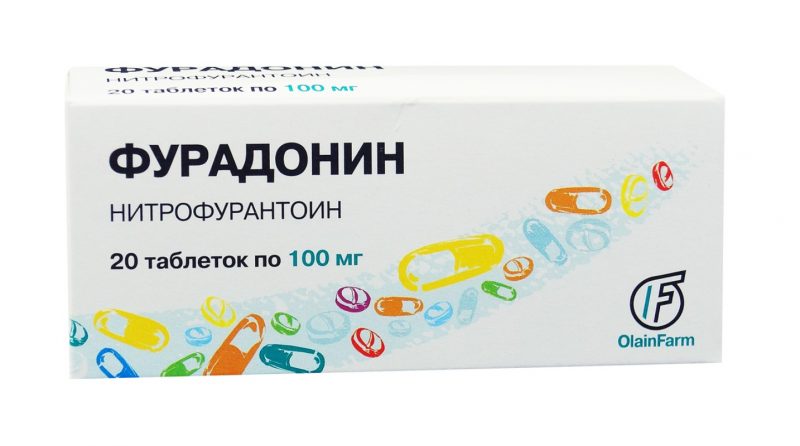
Acceptance of any antibacterial drugs is possible only as directed by a doctor. Despite the high therapeutic efficacy, modern drugs have many contraindications and can cause unwanted adverse reactions.
Antispasmodics
Agents with antispasmodic properties are an essential component of regenerative and supportive therapy for cystitis.
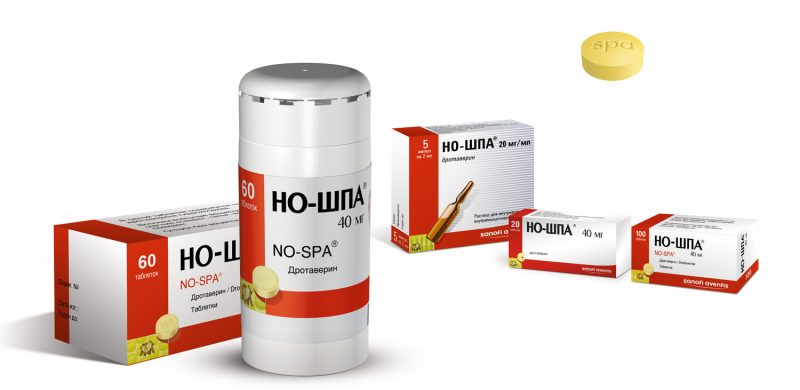
The most popular antispasmodic drugs are: No-Shpa, Papaverin, Drotaverin.The action of antispasmodic drugs is expressed in the elimination of the spasm of the smooth muscles of the bladder and the effect of relaxation, which relieves pain.
Acceptance of antispasmodics is appropriate both for acute forms of cystitis and for relapses of chronic infections.
Anti-inflammatory pills

To relieve inflammation of the bladder mucosa with cystitis, it is recommended to take non-steroidal anti-inflammatory drugs (NSAIDs) - Ibuprofen, Nurofen, Diclofenac, Nemesil. Along with the elimination of inflammatory processes, drugs of this group provide an analgesic effect, relieving pain and the inherent pathology of discomfort.
Phytopreparations
The use of herbal remedies is an effective way to enhance the effects of drug therapy. At the heart of herbal remedies are natural plant components with biological activity.
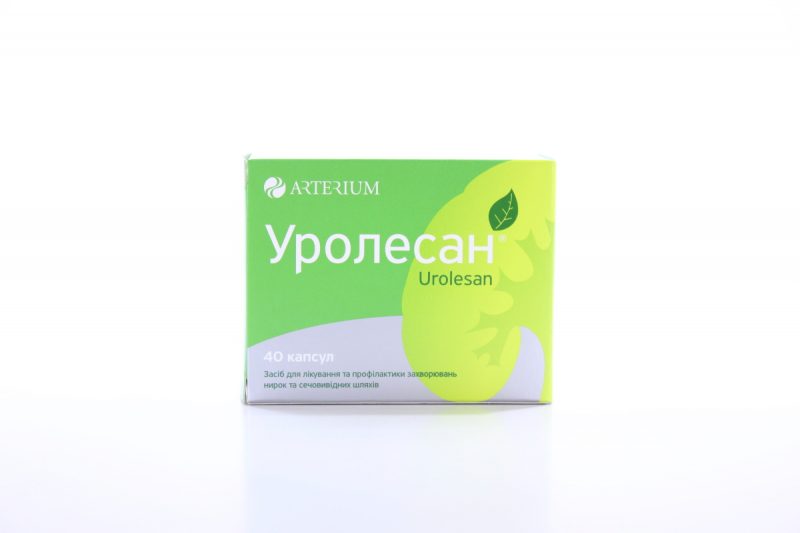
Urolesan - a tool that provides antiseptic, antispasmodic and diuretic effects. Available in the form of capsules, syrup or drops.
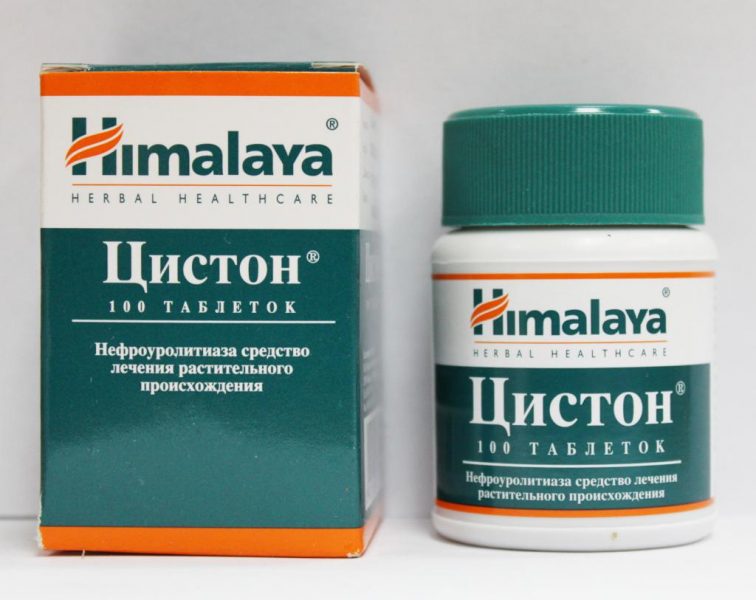
Cyston - tablets based on extracts from plants with nephrolytic and antimicrobial properties.

Phytolysin - paste based on orange and fir oils. It has a diuretic, anti-inflammatory and antispasmodic effect. Prevents the development of urolithiasis.
Reception of herbal remedies is most effective in the initial stage of development of cystitis.
Probiotics
As a result of exposure to infectious microorganisms, and after taking antibiotics, a decrease in the activity of beneficial microflora can be observed.
To maintain the natural physiological level of microflora in the mucous membranes of the intestines and genitals, it is necessary to use probiotics - food additives containing live cultures of microorganisms.

Popular products with probiotic action include Linex, Hilak Forte, and Beefiform.
Treatment of a chronic form of the disease
To get rid of the chronic form of the disease, it is necessary to diagnose all potential foci of infection and provide complex therapy that suppresses the vital activity of pathogens and its consequences.

The main methods of treating chronic cystitis:
- etiological therapy is aimed at eliminating the pathogen of infection and consists in taking antibacterial drugs;
- pathogenetic therapy allows you to restore the functions of the immune system, normalize the hormonal background and eliminate the structural pathologies of internal organs. The main objectives of therapy are to restore the natural outflow of urine and eliminate all possible foci of infection. Treatment involves the use of immunomodulating and anti-inflammatory drugs, and in some cases, surgical correction;
- disease prevention - a set of measures to prevent the possibility of a relapse of the infection.
As additional therapeutic measures, physiotherapy is prescribed - electrophoresis, tissue electrostimulation, laser exposure, as well as special gymnastics that normalize blood circulation in the pelvic organs.
Folk remedies for cystitis in women
The list of folk remedies recommended for the treatment of cystitis includes well-known and accessible herbal remedies: a decoction of dill seeds, millet infusion, teas, infusions and baths from pharmaceutical chamomile, infusion from parsley seeds, and St. John's wort teas.
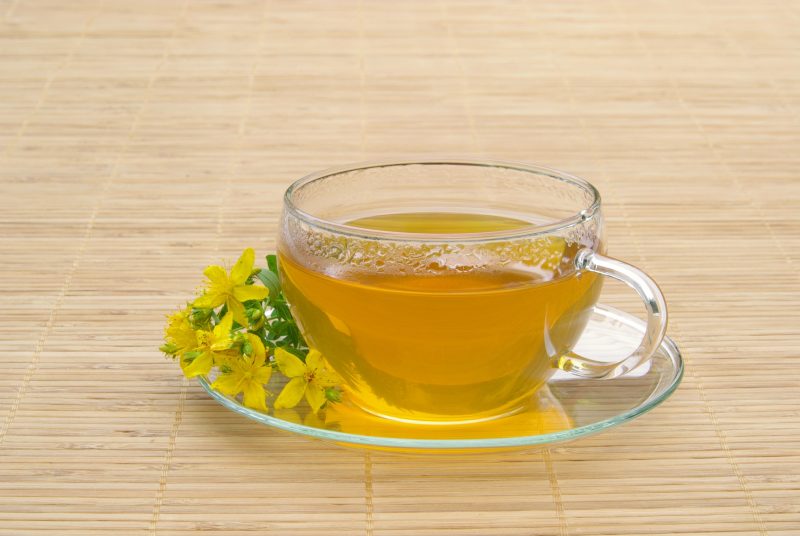
In addition, cranberries and cranberries are considered an unchanged component of home treatment for cystitis.
Due to its unique composition, lingonberry leaf provides a comprehensive therapeutic effect on the organs of the urogenital sphere - antimicrobial, diuretic and anti-inflammatory. Tea from lingonberry leaves is prepared according to the recipe for the preparation of ordinary tea leaves. I take this tea three times a day in half a glass.
Drinking cranberry-based drinks provides a powerful healing effect.
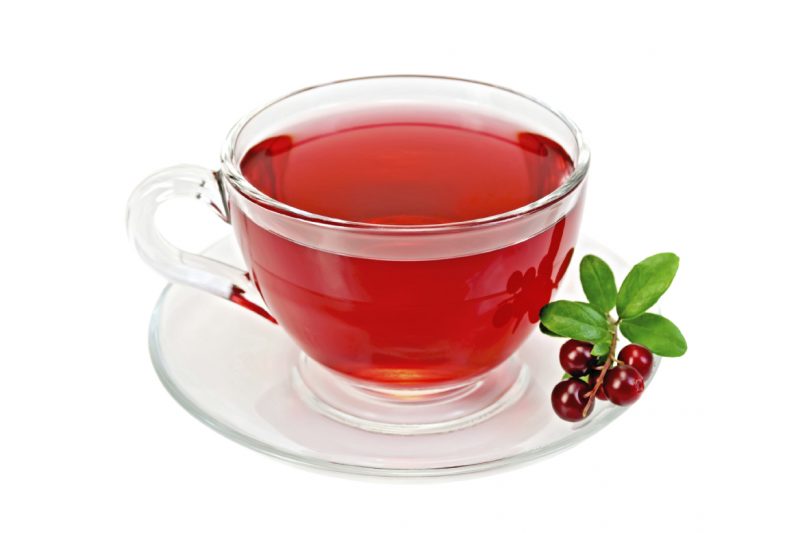
Thanks to cranberry proanthocyanidins, berry tea:
- inhibits the vital activity of pathogenic microorganisms;
- prevents the subsidence of pathogens on the walls of the urinary system;
- relieves inflammation;
- protects the body from fungi and germs;
- enhances vascular elasticity;
- has an immunomodulatory effect.
For the preparation of a healthy drink using fresh or frozen stick. The berries are chopped, poured with boiled water and kept on a steam bath for 10 minutes. Two cups of the drink a day with the addition of honey in record time will improve well-being and health.
Nutrition and microflora
Proper nutrition during the treatment of cystitis is given special importance. It depends on what types of products will be present in the diet, how quickly inflammation can be removed and the restoration of damaged bladder tissue can be started.
In addition, a properly organized diet supports the functionality of the microflora that lives on the mucous membranes of the internal organs. This ensures the elimination and elimination of pathogenic microorganisms, as well as the normalization of recovery processes.
The diet is based on specially selected foods and drinking regimen.

It is imperative that nutrition is in accordance with the following principles:
- all foods consumed must have diuretic properties;
- the amount of salt consumed must be reduced to a minimum;
- exclude the menu of spicy, fatty, fried, smoked, sweet and dairy dishes, as well as preservation;
- limit the use of foods containing protein;
- when cooking dishes should be limited to minimal heat treatment;
- hard drinks and alcohol are completely excluded;
- the total amount of fluid drunk per day is at least two liters.
Throughout the course of treatment, cereal cereals, light vegetable soups, boiled meat and fish of low-fat varieties, yogurt, low-fat light-salted cheese, cabbage, zucchini, cucumbers, parsley, pomegranate, watermelon and pear are recommended for use.
From drinks, preference should be given to herbal teas and cranberry and cranberry drinks.
Cystitis Prevention
The predisposition to the disease remains throughout the life of a woman, at least once having had cystitis.
Preventive measures will help prevent relapse:
- timely treatment of any ailments;
- stress minimization;
- compliance with personal hygiene;
- a shower is preferable to a bath;
- regular visits to the gynecologist and urologist, passing tests;
- compliance with the drinking regime.
In the summer, it is important not to miss the opportunity to flush the kidneys and bladder with more watermelons.
And most importantly, don’t sacrifice health to beauty and always dress according to the weather, especially in spring and autumn - they are warmly deceiving, and the risk of getting sick is too high.












